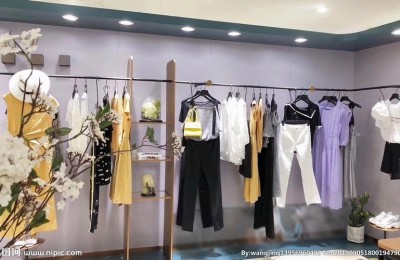In the early stage, cotton transportation from Xinjiang was difficult, and textile companies were expected to replenish their stocks, so cotton prices remained strong. However, transportation bottlenecks in Xinjiang have been gradually eased recently, and supply from the mainland has increased. Analysis of the supply and demand pattern shows that domestic cotton supply will be surplus before March next year, and cotton prices may slowly decline.
On December 7, Xinjiang’s hand-picked cotton “Double 2” and “Double 30” station delivery prices were 16,000-16,200 yuan/ton, and the price of machine-picked cotton “Double 28” was 15,300-15,400 yuan/ton, remaining stable. However, according to some manufacturers, recently, many mainland buyers have only paid part of the payment for the goods, and most of the remaining balances are due in 20-30 days. If the seller insists on taking delivery of the goods in cash, the transaction cannot proceed. This not only increases the seller’s risk of selling cotton, but also increases the seller’s financial pressure. According to cotton merchants, truck transportation costs from Aksu to the mainland have recently increased by 3-5%. For example, the cost of shipping from Aksu to Shandong has risen to 1,020-1,050 yuan/ton this week, an increase of 50-70 yuan/ton.
Against the background of steady and latent declines in lint cotton, seed cotton prices continued to rise, once again squeezing corporate profit margins. On the 9th, the purchase price of seed cotton in Aksu region was 7.2-7.3 yuan/kg, and the price of long-staple cotton seed cotton was 8.0-8.1 yuan/kg (clothing content 32%, moisture regain 10%). According to enterprise calculations, the current cost of Xinjiang cotton “double 29” is 16,100-16,300 yuan/ton, and the cost of 137-grade long-staple cotton is 20,700-20,900 yuan/ton. The cost and sales are basically the same or slightly higher than the selling price, and the ginner is in a loss. or breakeven status.
In recent days, the selling price of cotton seeds in Xinjiang has been somewhat weak and has fallen. The delivery price of ginners in Aksu, Bachu and other places is 2.60-2.62 yuan/kg. Although some cotton companies still insist on the price of 2.64-2.65 yuan/kg, they are very low. Difficult to ship. The selling price of cottonseed in Kuitun, Shihezi and other places has also been adjusted downward to 2.61-2.63 yuan/kg. Some cottonseeds with high water content and large impurities are sold at less than 2.60 yuan/kg. Most of the oil mills and linters mills in Hebei, Shandong and Xinjiang have reduced or suspended their purchases. Some oil mills that purchased cotton seeds at high prices in the early stage have suffered obvious losses. Recently, the prices of cotton meal, cotton linters, and cotton oil have stagnated or weakened. Oil mills’ profits have been greatly compressed or even suffered losses. “Destocking” has become a top priority for oil mills. At present, some ginners in Xinjiang are hoarding large amounts of cotton seeds and are not in a hurry to sell them, and do not accept prices below 2.63 yuan/kg.
According to the “Xinjiang Cotton Target Price Reform Pilot Work Implementation Plan”, the price collection period in September, October and November has ended, and the accounting, allocation and distribution of the total subsidies to farmers in Xinjiang in 2016 have gradually been put on the agenda. Recently, some cotton farmers, large growers, cotton processing companies, and research institutions are also calculating how much planting subsidies farmers can receive for one kilogram of seed cotton this year.
The market volume and sales volume of Xinjiang cotton in September this year were very low (mainly due to processing and transactions in Hami, Turpan and other places), and were directly affected by the one-month extension of the reserve cotton rotation. Therefore, the author judges that from September to November, Xinjiang cotton ” The average sales price of 3128” grade will be 15,600-15,800 yuan/ton. The target price of cotton in Xinjiang in 2016 is 18,600 yuan/ton. Based on this calculation, the price difference with the cotton target price is 2,800-3,000 yuan/ton. It is necessary to deduct 10% of the area direct subsidy of the four prefectures in southern Xinjiang and 5% of the autonomous region’s fiscal reservation. , the actual output direct subsidy amount is 2380-2550 yuan/ton.
According to feedback from ginners in southern and northern Xinjiang this year, the average clothing content of seed cotton is 39.5-40.5%, and the average clothing content of a few ginners in southern Xinjiang can reach 41-41.5%. Assuming a 40% calculation, with an average of 2.5 tons of seed cotton producing one ton of lint, then the direct subsidy for each ton of seed cotton in Xinjiang is 2380-2550/2.5=952-1020 yuan, and the direct subsidy for each kilogram of seed cotton is 0.95-1.02 yuan. Since the four prefectures in southern Xinjiang still have a 10% area subsidy, the subsidy amount is slightly higher than that of other regions.
The above results are estimated by the author according to his own calculation method, and there is a certain deviation from the actual subsidy amount.
So what were the profits of farmers in Xinjiang in 2016? Calculated based on the average yield per mu in Xinjiang of 280 kilograms (the yield of hand-picked cotton in southern Xinjiang is generally more than 300 kilograms, but the yield of machine-picked cotton in some cotton areas in northern Xinjiang is slightly lower). As the purchase price of seed cotton is “high at first and then low”, the average purchase price of 40% cotton picked separately is about 7.35 yuan/kg (high point 7.70-7.80 yuan/kg, low point 6.70-6.80 yuan/kg, excluding direct subsidies). Except for the four prefectures in southern Xinjiang, the gross income of farmers in other cotton areas is 280*7.45=2086 yuan. After deducting the contracting fee of 1,700 yuan/mu, physical and chemical costs, picking expenses and other expenses, the net income per mu of land is about 350-400 yuan. .
</p






